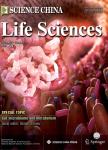Arginine bi-directional translocation and breakdown into ornithine along the arbuscular mycorrhizal mycelium
Arginine bi-directional translocation and breakdown into ornithine along the arbuscular mycorrhizal mycelium作者机构:College of Chemistry and Life Sciences Zhejiang Normal University Jinhua China
出 版 物:《Science China(Life Sciences)》 (中国科学(生命科学英文版))
年 卷 期:2009年第52卷第4期
页 面:381-389页
核心收录:
基 金:Supported by Science and Technology Department of Zhejiang Province (Grant No. 2006C22009)
主 题:arbuscular mycorrhiza arginine in vitro culture 15N labeling ornithine urea cycle
摘 要:Bi-directional translocation and degradation of Arginine (Arg) along the arbuscular mycorrhizal (AM) fungal mycelium were testified through 15N and/or 13C isotopic labeling. In vitro mycorrhizas of Glomus intraradices and Ri T-DNA-transformed carrot roots were grown in dual compartment Petri dishes. [15N- and/or13C]Arg was supplied to either the fungal compartment or the mycorrhizal compartment or separate dishes containing the uncolonized roots. The levels and labeling of free amino acids (AAs) in the mycorrhizal roots and in the extraradical mycelia(ERM) were measured by gas chromatogra- phy/mass spectrometry (GC-MS) and high-performance liquid chromatography (HPLC). The ERM of AM fungi exposed in either NH4+ or urea as sole external nitrogen source had much higher 15N enrichment of Arg, compared with those in nitrate or exogenous Arg; however, glycerol supplied as an external car- bon source to the ERM had no significant effect on the level of Arg in the ERM. Meanwhile, Arg bio- synthesized in the ERM could be translocated intact to the mycorrhizal roots and thereby the level of Arg in the mycorrhizal roots increased to about 20% after culture of ERM in 4 mmol/L NH4+ for 6 weeks. Also Arg was found to be bi-directionally transported along the AM fungal mycelium through [U-13C]Arg labeling either in the mycorrhizal compartment or in the fungal compartment. Once Arg was translo- cated to the potential N-limited sites, it would be further degraded into ornithine (Orn) and urea since either [U-13C] or [U-15N/U-13C]Orn was apparently shown up in the mycorrhizal root tissues when [U-13C] or [U-15N/U-13C]Arg was labeled in the fungal compartment, respectively. Evidently Orn formation indi- cated the ongoing activities of Arg translocation and degradation through the urea cycle in AM fungal mycelium.



